Anglers Booking Team
The expert copywriters at Anglers Booking have meticulously crafted this article. Our dedicated team of writers provides valuable insights and information to enhance your angling experience.
 10 minutes read
10 minutes readChoosing the best lure can make Trout fishing easier. The wrong one, though, can ruin your day. Knowing which lure to use is crucial for triggering a bite. Trout are smart and picky. Things like water, weather, and food can change their behavior.
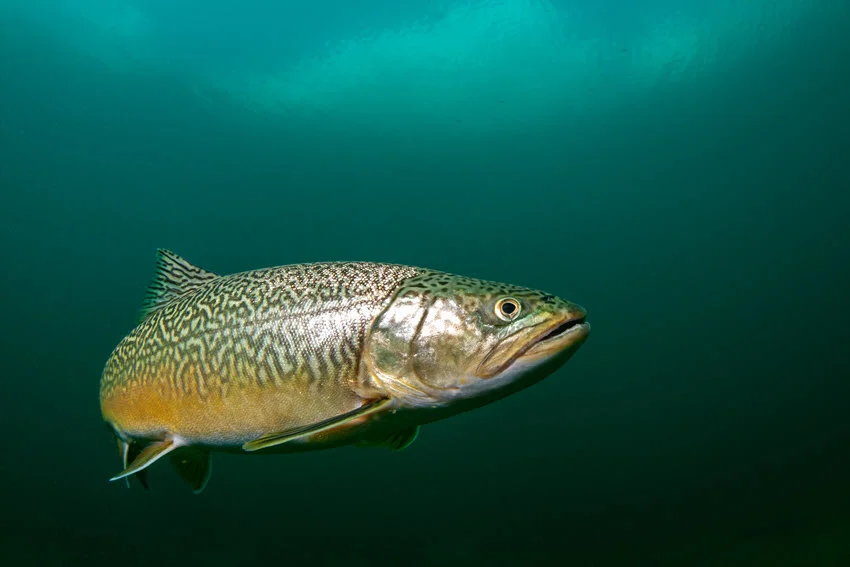
In this guide, we'll break down why lure choice is so essential when targeting Trout and how Trout behavior changes by season and water type. We will present to you the top-performing lures on the market with expert tips on how to use lures effectively. From clear rivers to murky reservoirs, we'll help you match the perfect lure to every situation.
Trout are highly intelligent and reactive fish that don't strike blindly. They react carefully, correlating to their surroundings. Their behavior depends on factors such as water temperature, food availability, oxygen levels, and light.
Understanding where they live and how they feed is the first step toward more consistent catches. Do not miss parts below!
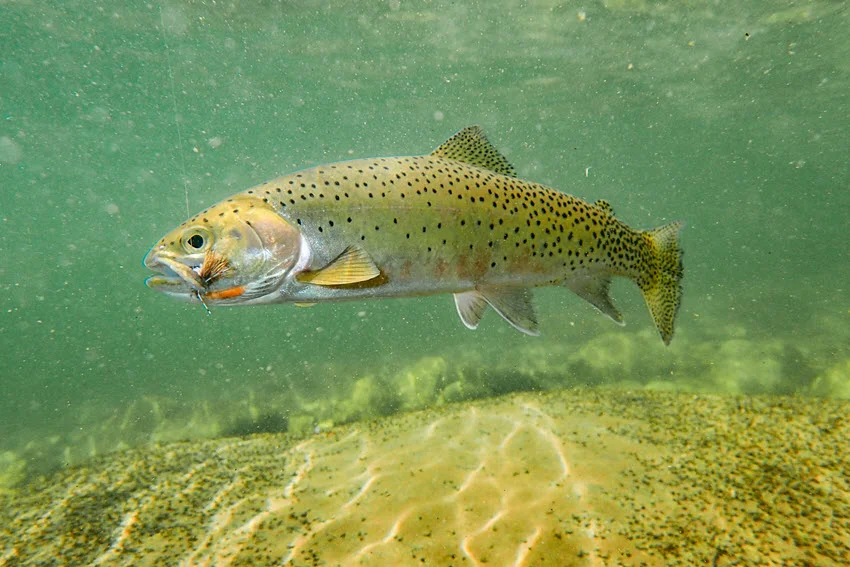
Trout thrive in clean, cold, and well-oxygenated environments. Mountain streams with fast-moving water, spring-fed creeks, and deep lakes are places where this fish could be found.
Trout can be found in places where they can conserve energy but still ambush prey. In flowing water, they use structures and current breaks to hold their position while watching for food drifting by.
In general, Trout are most active when water temperatures range between 50°F and 65°F. Outside of this comfort zone, their feeding slows, and they become more cautious. They tend to shift location throughout the day based on light, temperature, and pressure from anglers.
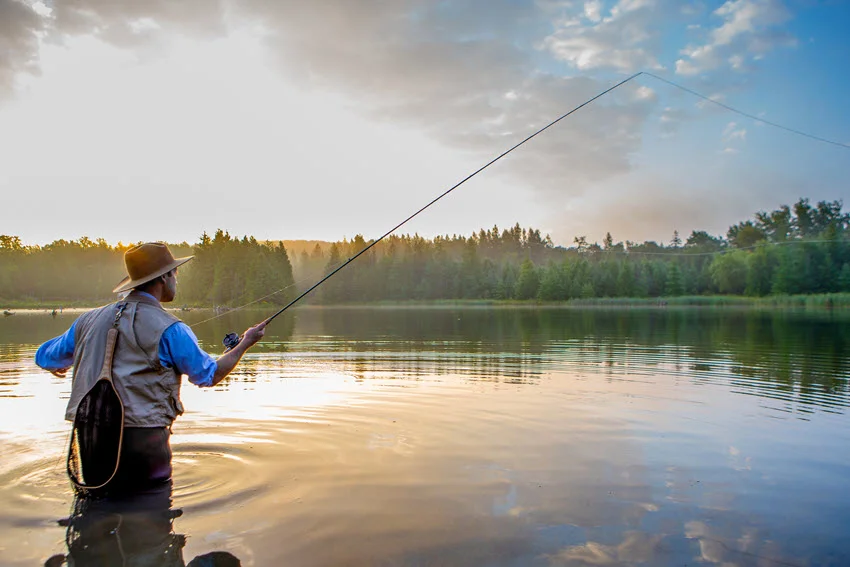
While habitat and water conditions shape Trout behavior, seasonal changes have a strong influence on how actively Trout feed and where they position themselves. Knowing how Trout respond to seasonal shifts is essential. Here's how Trout behaves throughout the year.
Follow the seasons to match how Trout behaves. Choose the right time of day, right spots, and lures that work best. Even small changes can help you catch more fish.
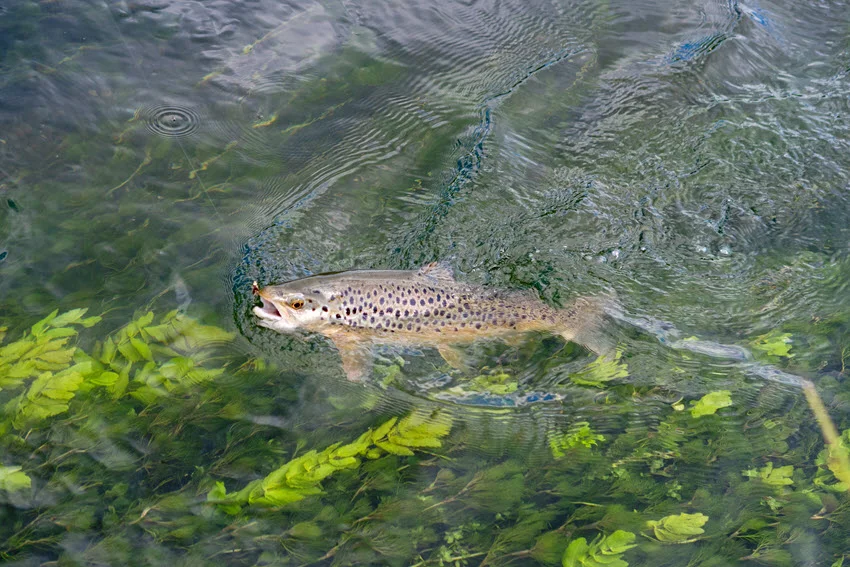
Trout inhabit a wide range of water types, from tiny creeks to deep lakes, and each setting demands a different approach to lure selection and presentation. Matching your lure to the environment will lead to productive fishing. Here's a breakdown of where Trout are commonly found and which lures work best in each location:
It is essential to understand these environments. In that way, you can adapt your lure choices accordingly, which will help you fish smarter, not harder. Knowing where Trout prefer to hang out and what they're likely to eat is essential for success.
There's no single best lure for Trout in every situation. The best lure depends on water conditions, the time of year, and how actively the Trout are feeding. As these factors shift, your approach should too. Below are the best lures and tips on when to use them.
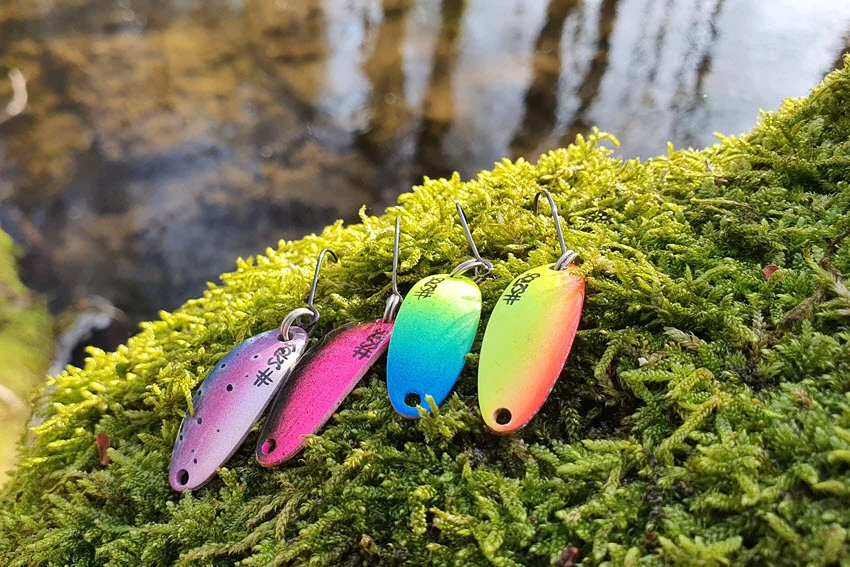
Spoons are classic Trout lures known for their wobbling action that mimics injured baitfish. They shine in deeper lakes and reservoirs. Spoons are effective in colder water where Trout are cruising drop-offs or submerged structure. Use them when visibility is moderate to high and Trout are more aggressive.
Silver, gold, and reflective patterns work best, while size should match the local forage, smaller for stocked Trout and larger for wild or lake-dwelling fish. Cast and retrieve with pauses to trigger strikes.

Spinners create flash and vibration. That can attract even neutral Trout. They work exceptionally well in rivers and creeks. Go for them when the water is slightly stained or Trout are holding in current seams or pockets.
High-visibility colors can stand out in murky water. Brown or silver is great for clear water. Throw your line ahead of the current and retrieve it at a steady pace, letting the spinner work just above the bottom or through the mid-water column.

Jigs offer control and flexibility. They're instrumental during cold weather or in heavily fished areas. They're great in ponds, lakes, or slower parts of rivers where Trout are hugging the bottom. Use them when Trout are inactive or suspended close to structure.
Natural colors such as black, olive, or white effectively imitate minnows or leeches, and sizes ranging from 1/32 to 1/8 oz usually elicit the best response. Work them slowly with small rod tip lifts or vertical hops to mimic struggling prey.
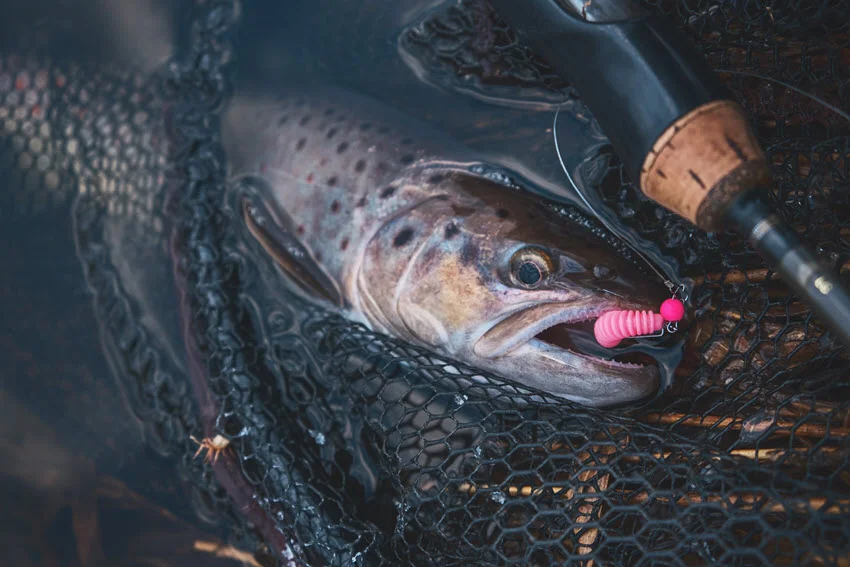
Soft plastics can imitate a range of prey. That includes worms, leeches, and minnows, making them an excellent choice in almost any body of water. They work best when Trout are feeding slowly or when fishing pressure is high.
Choose them in natural hues like brown, pumpkinseed, or translucent shades, especially when sight fishing in clear ponds or lakes. Rig them on small jig heads or wacky-style under a float, and fish them with slow drifts near cover or drop-offs.
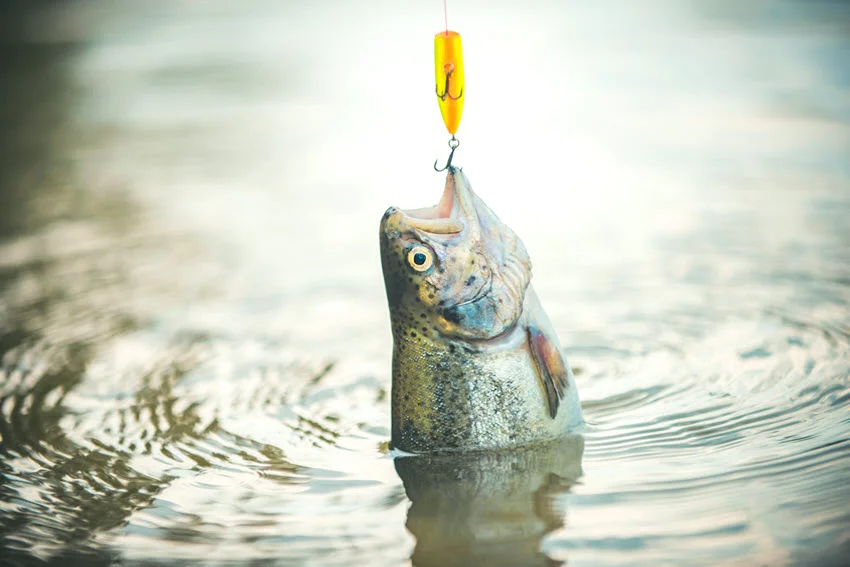
Crankbaits and minnow-style lures are deadly for aggressive Trout, especially in rivers and larger lakes. They perform best when fish are feeding on small baitfish or in low-light conditions when Trout are hunting.
Use compact lures with realistic finishes. Silver, Brown Trout, or Rainbow Trout patterns work best. Use shallow-diving models for creeks and rivers, and deeper divers or jointed bodies for trolling in lakes. Retrieve with jerks and short stops to simulate a darting or injured minnow.
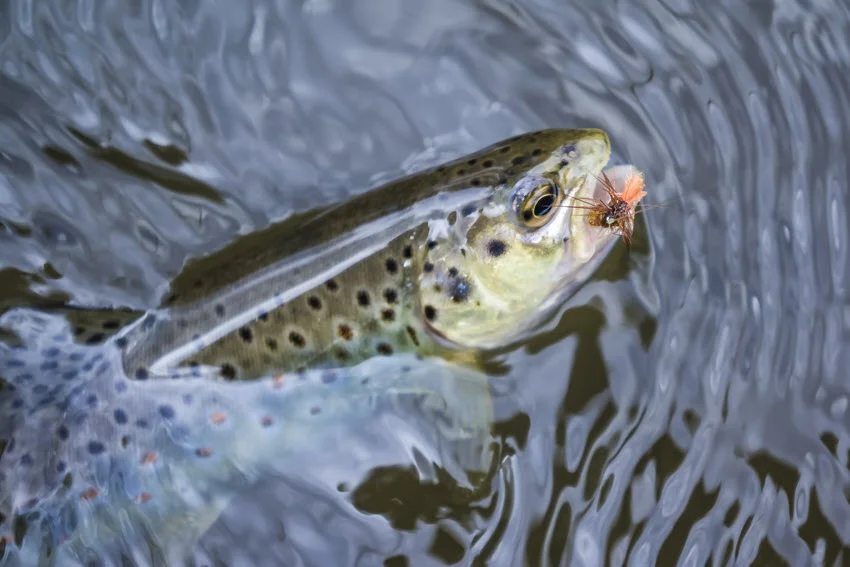
Flies aren't just for fly rods. They work surprisingly well on spinning setups when paired with a float or bubble rig. This technique is very productive in small creeks, ponds, or calm lake edges where Trout are rising to feed on surface insects. It shines during hatch events or calm evenings when fish are sipping at the top.
Choose small dry flies, emergers, or nymphs. Cast upstream or across current, let the fly drift naturally, and watch closely for takes. This light and stealthy approach can outfish heavier lures when Trout are focused on bugs.
Using effective techniques and strategies is crucial for successful Trout fishing. Different conditions and Trout behaviors require the appropriate combination of lures or proven natural bait, along with varied retrieval methods. Below, we discuss the most productive strategies and techniques for Trout fishing.

Vertical jigging is ideal when targeting Trout that hold deep in lakes, reservoirs, or deep river pools. It's especially productive during cold seasons when Trout stay near the bottom. Vertical jigging works best with soft plastics or jigs rigged on weighted heads. Drop the lure straight down and use short, controlled rod lifts to bounce the bait off the bottom or suspend it mid-water. Your movements need to be subtle and deliberate. When bites are light, keep a finger on the line to feel for any hesitation or twitch.
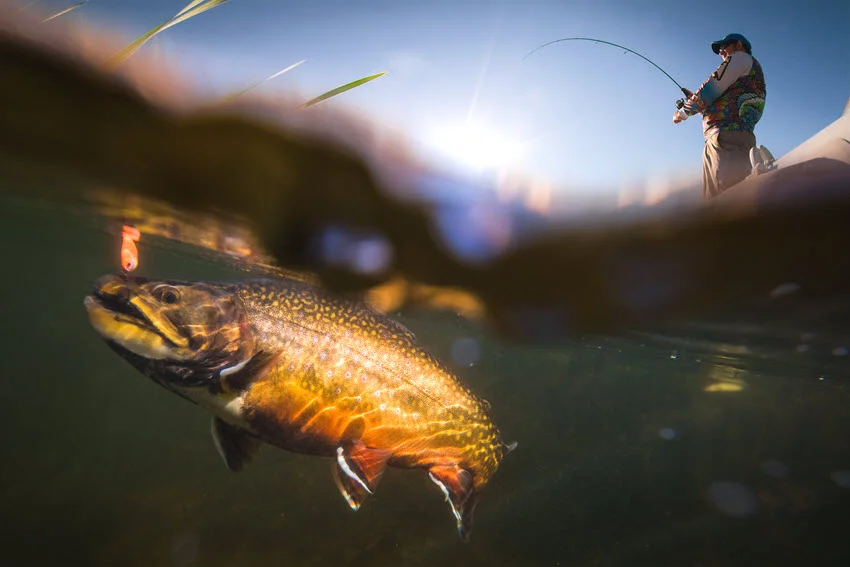
The float-and-drift technique is suitable in creeks, rivers, and still ponds where Trout feed near the surface or at mid-depth. It's best used when fish are passive or feeding selectively during hatches. Rig the lure below a float or bubble and cast upstream or cross-current, letting the current carry your bait naturally through likely holding areas. Adjust the depth to keep your lure in the strike zone and use the float to maintain a natural drift. This presentation keeps your bait in front of the fish longer, which is perfect for pressured or finicky Trout.
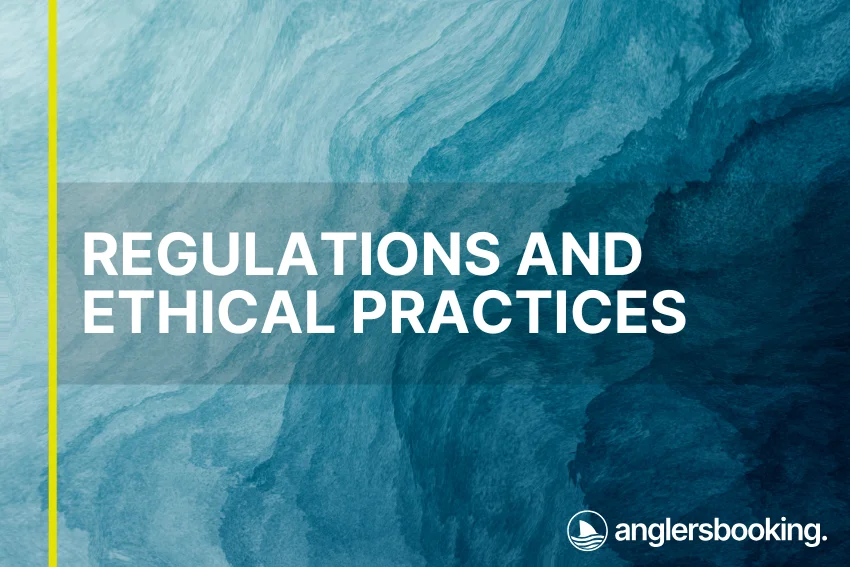
Understanding fishing regulations and ethical practices about specific fish species protects fish populations and ecosystems and promotes responsible angling practices.
Anglers Booking team
Fishing for Trout must be responsible. There are regulations designed to protect Trout populations. General rules are related to daily bag limits, seasonal closures, and barbless hook requirements. Also, there are designated catch-and-release (C&R) zones. Some rivers allow fishing only with artificial lures. Some of them restrict access during spawning periods. If you don't adhere to these rules, you will pay fines.
Anglers are also encouraged to use ethical handling techniques. Your hands need to be wet before touching a Trout. Gently return the fish to the water. Using hooks without barbs is a solid option for easier removal. If you're keeping fish, dispatch them quickly and respectfully.
Before fishing, check your state's fishing regulations. Rules are different. They can change by season, location, or even species. The best way to enjoy your day on the water and avoid trouble is to be informed and fish responsibly.
Catching Trout requires more than luck. It is important to match the lure that you use to the water conditions. Additionally, employing the right strategy is a great way to achieve successful fishing. Remember, Trout fishing requires skill and patience!
And what lure do you use the most often for Trout fishing? Which one was the most successful according to your experiences? We are happy to see your answers in the comments.

The expert copywriters at Anglers Booking have meticulously crafted this article. Our dedicated team of writers provides valuable insights and information to enhance your angling experience.
Embark on unforgettable fishing adventures with us at Anglers Booking.
book your charterOctober 17, 2025
October 15, 2025
October 10, 2025
October 11, 2025
October 4, 2025
September 29, 2025
September 25, 2025
September 21, 2025

You're now part of our exclusive community. Get ready for premium content and updates straight to your inbox.
close
Subscribe to our newsletter and receive a selection of cool articles every week.
Please enter a valid email address.

Be the first to know when we're back in action.
Please enter a valid email address.
Leave a Comment
Your email address will not be published. Required fields are marked *
Thank you for your comment! It has been submitted for review and will appear on the site shortly.